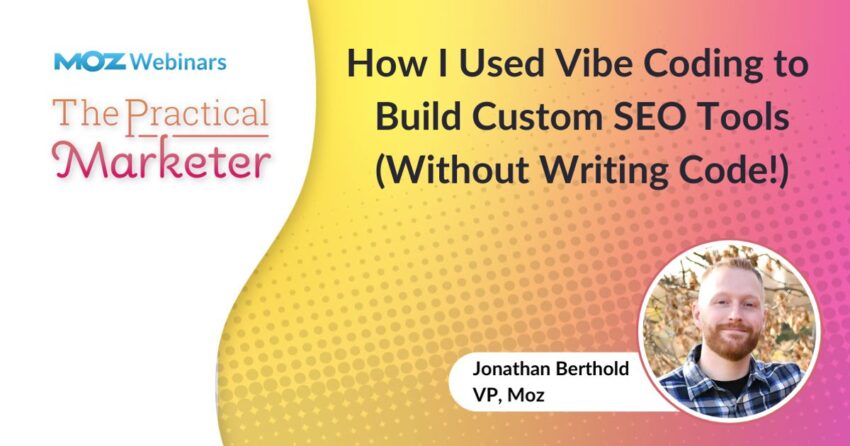TL;DR Summary of How Vibe Coding Empowers Marketers to Build Fast with the Moz API
Optimixed’s Overview: Accelerating Marketing Innovation Through AI-Assisted Vibe Coding and the Moz API
Introduction to Vibe Coding
Vibe coding is a novel approach where marketers collaborate with AI copilots—such as ChatGPT or Gemini—to build real, functional tools rapidly. This method bypasses the usual delays caused by limited engineering resources and complex API documentation. The process involves providing clear goals, sharing API details with the AI, and iteratively refining code until a working prototype emerges.
Phase 1: From Python Script to Bulk Data Tool
- Initial challenge: running a Python script to query Moz API for 1,500 domains took days manually.
- Solution: Using AI copilots in Google Colab, the author transformed a single-request script into a bulk checker.
- Key insight: prompting is a collaborative dialogue—debugging and specifying errors allowed the AI to improve code effectively.
- Outcome: a CSV-exporting tool that saved hours of manual work and supported strategic content decisions.
Phase 2: Enhancing Accessibility with a Google Sheets Add-on
Recognizing that sharing Python scripts was cumbersome for non-technical team members, the author extended the tool to a Google Sheets add-on. This allowed easy API key input, endpoint selection, and error handling within a familiar interface. This phase emphasized the importance of usability over code complexity and further illustrated how clear communication with AI copilots accelerates development.
Phase 3: Scaling Up to a Web App
- Motivation: Google Sheets add-on was not scalable or instantly accessible to all users.
- Approach: Leveraging Gemini AI to build a web application that integrates with the Moz API.
- Challenges: Learning backend concepts like server setup and CORS with AI guidance.
- Enhancements: Added user-friendly features such as dark mode, retro themes, and live API quota counters.
- Result: A reliable, accessible web app that demonstrated the power of combining a robust API with an iterative, AI-assisted coding workflow.
Lessons Learned and Best Practices for AI-Driven Development
- Define clear, specific goals: Break down tasks into manageable steps instead of one-shot prompts.
- Work iteratively: Build foundational API calls before UI and accessibility.
- Engage in detailed debugging conversations: Clearly describe errors and expected outcomes to the AI.
- Assign roles to the AI: Provide context and persona to improve response relevance.
- Request explanations: Understanding fixes promotes learning and prevents repeated mistakes.
Conclusion: Empowering Marketers to Build Independently
Vibe coding, powered by AI copilots and the Moz API, democratizes tool-building for marketers. This approach reduces dependency on engineering teams, accelerates innovation cycles, and enhances data-driven marketing capabilities. With the right prompting skills and a quality API, marketers can prototype, build, and deploy functional tools within a weekend, turning ideas into impactful business assets swiftly and confidently.
